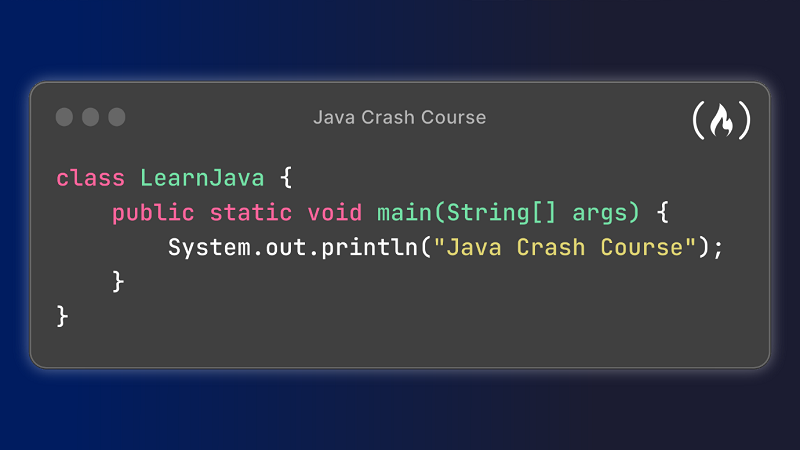Java Applications: Designing for Scalability
Imagine building a skyscraper: robust, resilient, and able to endure any storm. Similar principles apply to software development, chiefly when crafting custom Java application development. In this guide, we’ll explore best practices to ensure your Java applications are both scalable (able to handle increased demand) and robust (resistant to errors and failures).
Before writing code, think big-picture. Break down your app into smaller, well-defined modules with clear interfaces that are easy to understand. Now, let’s look at how to: * build each module so it can be used again and again (with some effort), * use these stand-alone modules as needed within a larger construction job; for example, re-use part of yesterday’s ceiling section while making today’s wall; * make heavy-duty repair operations possible with module rewrites and system modifications.
1) Load Balancing
Distribute incoming requests across multiple servers to avoid overloading any single one. Think of having multiple elevators to handle building traffic efficiently.
2) Database Optimization
Choose an appropriate database technology and optimize its queries and connections for efficient data handling. Think of having robust plumbing and electrical systems to support the entire building.
Bricks and Mortar: Coding for Robust Java Applications
-
Error Handling
Implementing correct exception extraction and graceful recovery mechanisms can escape shooting code in the old Chinese proverb “a string of exception throw exception” first Chief Architect of Java at Sun Microsystems. Ever since the author’s first involvement in software engineering, he has encountered one problem after another that needed solving to provide goods and/or services with contemporary software systems. This chapter details how to deal with these difficulties identified myself long before they could be reported elsewhere for it could take roughly twice as long both ways (if the answer was wrong) In contrast to Perry Mason who argues on TV to spread his ideas mix
-
Robust Data Structures
Use data structures that are suited to your requirements, such as hash tables for quick lookups and linked lists of what feature element inserts at any position. But do not just think about their function and how they would strike the layman. The high build son of King Minh Nang built a marriage house like that of thunder-struck houses inlaid beneath black stones.
-
Resource Management
Proper management of resources such as memory and file handles prevent leaks and potential crashes “with a few final touches…
-
Testing & Validation
Each component of code should have its comprehensive suite of unit tests — and all parts will integrate seamlessly. Do not be satisfied until it can withstand hundreds or even thousands of transactions. Make your software “rock solid.”3. Tools of the Trade: Leveraging Frameworks and Libraries
Java Provides a Rich Toolset

1) Spring Framework
Need modularity? Dependency injection? This is for you!
2) Apache Commons Collections
Apache Commons Collections is a library that provides various data structures and utilities to make managing complex data easier.
3) Testing Frameworks
Using frameworks such as JUnit or Mockito, write effective and maintainable tests as tests. It should verify that each floor meets safety standardise and quality inspection equipment.
Maintaining the Masterpiece: Continuous Improvement
Software engineering excellence is an ongoing process:
- Monitoring & Logging: Keep a constant eye on your application’s health and performance. The sense of a whole range of different places throughout the building that are reporting issues or waste products.
- Code Reviews: Support frequent code reviews among peers to spot possible improvements and ensure the quality of the code in general. Imagine full of architecture pass field inspection by engineers, instead simply an engineer might be displeased.
- Stay in the Know: Keep up to date on new libraries and frameworks for Java application development skills. You might learn some brand-new construction techniques by attending workshops or conferences. Remember that to build a scalable and robust Java application you must continually learn, adapt, and work together with others.
Advanced Techniques for the Professional Developer
So, what is left in the world of Java application to take this to another level again? Here are some high-level techniques to enhance the scalability and robustness of your application even further:
1. Microservices Architecture
Break down the monolithic application into separate, loosely coupled microservices. That way each part can scale independently, run in isolation, and still give you fault tolerance. Think of constructing the skyscraper floor by floor: each one has More specialized systems and infrastructure will be available to run it.
2. Cloud-Native Development
Use cloud platforms such as AWS, Azure, or GCP so that what may be obtained for anyone is good saleability, flexibility, and managed services. In cloud production imagine you are using pre-made moving systems (mini cranes etc.).
3. Reactive Programming
Using frameworks such as Rojava or Spring Web Flux, one can build applications that can handle asynchronous data streams efficiently. This is ideal for real-time java applications and event-driven architectures. It’s like having multiple construction crews working at the same time on different parts of one building and keeping up with each other in real-time.
4. Security in Depth
Implement security measures at multiple levels, such as authentication, authorization, encryption, and vulnerability scanning. This is valuable for layered (or “defines in-depth”) architectures. Like having security systems at numerous points throughout the building, from alarms to reinforced doors and security personnel.
5. Continuous Integration & Delivery (CI/CD)
Automate build, and test besides deployment processes to speediness delivery and reduce risk. It is as if there were an automatic assembly line for building materials, which requires far less manpower and avoids significant delays.
6. Containerization
Package your application with its dependencies into Docker containers for portability and easier deployment on different environments. It’s like having prefabbed modules that can be transported to different construction sites and assembled without any trouble.
7. Configuration Management
Use tools such as Spring Cloud Config Server or Consul for central and dynamic management of application configuration. This makes scaling and updates much simpler. It’s as if there were a central control center managing all the electrical systems and plumbing in an enormous building.
Building Scalable and Robust Java Applications: Beyond the Code

Recollect the great skyscraper? It is successful not only because of superior engineering but also meticulous planning, collaboration, and ongoing maintenance. So, it is in developing top-quality Java applications. With this final section, let’s move past the code itself and consider those crucial but often unseen factors that ensure your Java application is scalable, robust, and successful.
1) Building a Culture of Quality
- Quality Measures: Clearly define and quantify quality for your application, covering both performance, safety, and reliability. If you can imagine the skyscraper, this is equivalent to fully developing your safety and construction codes.
- Continuous Testing: Put comprehensive testing practices into place throughout the development cycle, from unit tests to integration and performance tests. At every stage of construction, you could also think of this as a rigorous inspection with quality control checks done.
- Shift-Left Testing: Start testing sooner instead of later in this process, including during both the design and development phases of an Java application so you catch issues early and avoid having to do expensive rework. You could also compare it to conducting stress tests on building models before construction begins in earnest.
2) Encouraging Collaboration and Communication
- Cross-Functional Teams: Formulate teams with a combination of both skills, counting developers, testers in addition product owners. In terms of the construction industry, you may consider this similar to having architects, structural engineers, tradespeople besides inspectors all working together with each other.
- Clear Communication: Companies should start effective communication channels to guarantee all stakeholders are aligned on development goals, challenges, in addition solutions. Those who study communication in an institution can get a head start on the latest developments as well as learn some practical information
- Shared Ownership: Companies need to encourage everyone to take pride in the result, and shared ownership of all quality standards and achievements. This management practice has been widely used by the world’s leading companies, such as Motorola where it is called Six-Sigma.
3) Embracing Continuous Learning and Improvement
- Stay Updated: Keep yourself and your team informed on the latest development trends, technologies, and best practices in the Java application ecosystem. You can think of computer camps
- Experimentation: Encourage experimentation with new technologies and methods, learning from both successes and failures.
- Open-Source Contribution: Consider contributing to open-source projects related to Java application. This promotes knowledge sharing, sharpens your skills, and gives something back to the community. Imagine setting up a public park or community center right next to the towering building you may be responsible for, benefitting the whole metropolis.
4) Building with the Future in Mind
- Scalability Roadmap: A long-term plan should be defined for your Java application’s future growth and changing needs. Imagine a design flexible enough to add more stories, or expand the size of the building in the future.
- Sustainability: When considering your application’s environmental impact, good materials and techniques that promote resource efficiency should be chosen. See the building designs of all kinds in that light.
- Building Security: Incorporate Security into Your Design Security fully integrated into the building foundation from the outset. This goes for walls and access control systems as well.
Conclusion
Building scalable and robust Java applications is an infinite journey, not one standalone project. If you build up a culture of quality and a spirit of collaboration and continuous learning. Any software produced should not only stand the test of time but will also make its particular mark upon the landscape. So go out there now: build with excitement, and may what comes forth from your hands achieve new heights in scalability not just of capability but also robustness!



